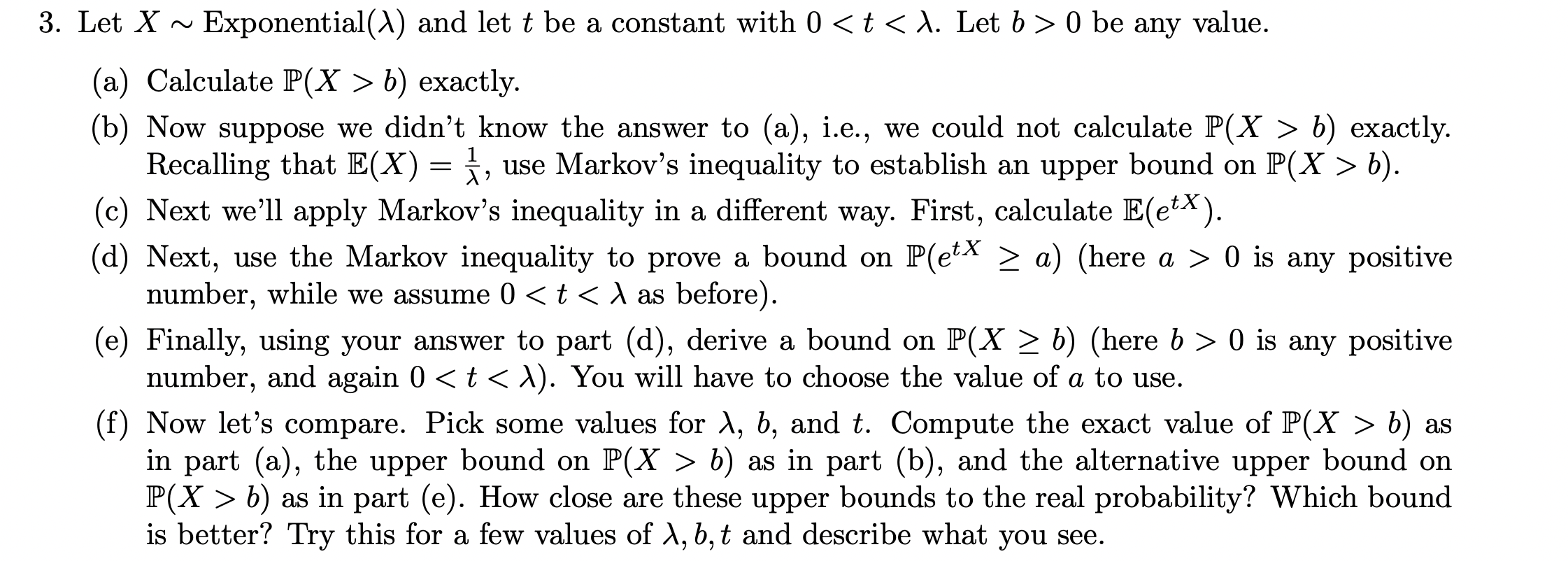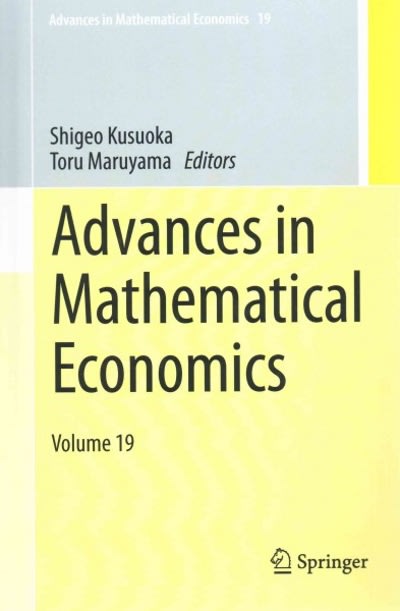Answered step by step
Verified Expert Solution
Question
1 Approved Answer
Help with question d, e, f 3. Let X ~ Exponential()) and let t be a constant with 0 . Let b > 0 be
Help with question d, e, f

Step by Step Solution
There are 3 Steps involved in it
Step: 1

Get Instant Access to Expert-Tailored Solutions
See step-by-step solutions with expert insights and AI powered tools for academic success
Step: 2

Step: 3

Ace Your Homework with AI
Get the answers you need in no time with our AI-driven, step-by-step assistance
Get Started


